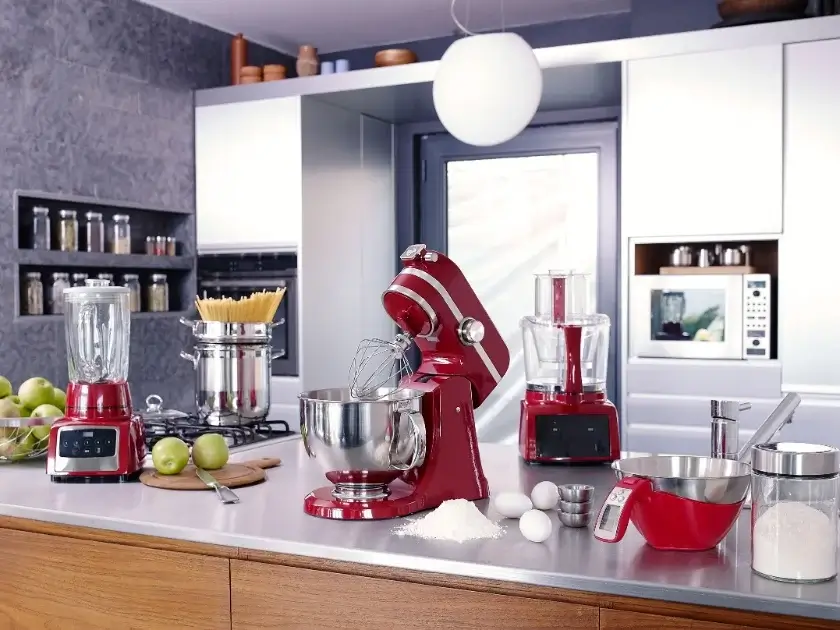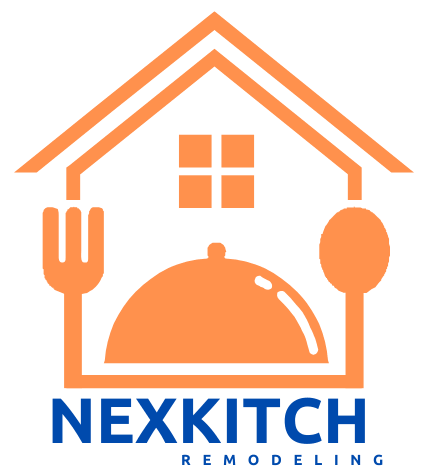Upgrading to smart appliances isn’t just a trend it’s a game-changer for how your kitchen works and feels. If you’re tired of clunky controls, rising energy bills, or appliances that just can’t keep up, you’re not alone. Many homeowners are searching for smarter ways to streamline daily routines without sacrificing style or comfort.
That’s where smart appliance upgrades come in. From voice-activated ovens to energy monitoring dishwashers, the right tech can bring both ease and efficiency into your space. But before diving into gadgets, it’s important to align your choices with smart kitchen layout planning for the best results.
You’ll also want to consider how features like motion sensors and automated lighting work in harmony. In fact, integrating these with custom kitchen lighting can boost not only ambiance but also energy savings by up to 20%, according to Energy.gov.
Here’s what you’ll uncover:
- Which smart appliances are worth the investment (and which to skip)
- Budget-friendly upgrade ideas that make a big impact
- Tips to future-proof your kitchen tech choices
- Simple planning strategies to avoid costly mistakes

Introduction: Why Smart Appliance Upgrades Matter
Smart appliance upgrades are more than just fancy tech they’re practical solutions to everyday frustrations like high utility bills, clunky controls, and time-consuming chores. Imagine a fridge that reminds you when you’re low on groceries, or a dishwasher that runs during off-peak hours to save money. These upgrades don’t just add convenience, they optimize your home’s efficiency. In fact, smart kitchens can reduce energy use by up to 28%, making them a smart financial move too.
Whether you’re remodeling or simply upgrading one appliance at a time, this guide covers what matters most:
- Budget-conscious ways to boost convenience and control
- Which smart appliances offer the best value
- How to plan your kitchen layout for seamless integration
- Tips to avoid common pitfalls
Smart Appliance Upgrades
What Makes an Appliance “Smart”
A smart appliance goes beyond basic automation. It connects to your home network typically via Wi‑Fi or newer universal protocols like Matter and integrates with voice assistants such as Alexa, Google Assistant, or Siri. But what really sets these devices apart is how they think and adapt.
With built-in AI features, today’s smart appliances can:
- Auto-dose detergent based on load size
- Recognize cooking patterns and adjust temperatures
- Provide real-time energy usage dashboards
These upgrades aren’t just bells and whistles they actively reduce waste, personalize settings, and help your appliances work smarter, not harder. As Ideal Home explains, smart appliances now operate more like digital assistants than just machines.
Highest ROI Devices
Some smart appliances offer far more return than others especially when it comes to energy savings and user convenience. Based on research from Key Micro systems and Home As We Make It, these upgrades lead the pack:
- Smart thermostats
Cut heating and cooling costs by 15–23% annually with learning features and remote control capabilities. - Smart water heater controllers
Schedule hot water usage and monitor energy use for lower monthly bills. - Smart power strips
Automatically shut off power to idle devices, reducing phantom energy draw.
If you’re looking to ease into smart living without overhauling your whole kitchen, starting with these high-ROI upgrades is a savvy move.
Smart Kitchen Essentials
Smart Refrigerators
More than just a place to store food, smart fridges now act like digital kitchen assistants. With built-in interior cameras, grocery tracking, and energy usage dashboards, they help you cut waste and shop smarter even sending alerts when you’re running low on essentials.
Sources like Real Simple, Uchify, and Key Microsystems note that newer models can also integrate with recipe apps, manage expiration dates, and track temperature fluctuations in real time.
Smart Ovens & Ranges
Smart ovens are changing the game for home cooks. Features like remote preheat, temperature probes, and app-synced recipes allow you to start cooking before you’re even in the kitchen.
According to Key Micro systems and Real Simple, some models also offer guided cooking with built-in AI that adjusts cook times and heat levels on the fly perfect for busy households or those new to cooking.
Smart Dishwashers
Forget trial and error. Today’s smart dishwashers use soil sensors to detect grime levels, automatically adjusting wash cycles for better results with less water. Models also include half-load options, leak detection, and real-time notifications, keeping you informed without the guesswork.
Key Micro systems highlights how this kind of automation improves cleaning while significantly lowering your utility bill.
Smart Coffee Makers & Small Appliances
Your morning brew just got a serious upgrade. Smart coffee makers can be controlled from your phone, timed to start with your alarm, and even suggest brewing settings based on your preferences.
Platforms like Atherton Appliance Blog, Yahoo, and 9meters note that small smart appliances from toasters to air fryers now include AI cooking guidance, programmable profiles, and voice control, making them ideal for compact or tech-savvy kitchens.
Planning and Integration
Designing a Smart Kitchen Layout
Before investing in smart appliances, it’s crucial to consider how everything fits together in your space. A thoughtful layout ensures each upgrade enhances your kitchen’s function, flow, and connectivity.
Keep these points in mind:
- Appliance dimensions and how they integrate with cabinets and countertops
- Reliable Wi-Fi signal throughout the kitchen, especially near larger devices
- Power access and spacing for plugs, cords, and ventilation
Mapping these details early makes installation smoother and prevents future issues.
Smart Home Ecosystem and Compatibility
Not all smart devices play nicely together. If your appliances are scattered across different brands or systems, controlling them can become frustrating.
Look for:
- Appliances that support Matter, a new standard that improves device compatibility
- Products designed to connect through a single app or virtual assistant
- Devices that offer routine software updates for long-term performance and security
Choosing an ecosystem that works in harmony helps you stay organized and stress-free as your smart kitchen grows.
Smart Appliance Upgrade Budgeting and ROI
Cost vs Benefit Analysis
Smart appliances can seem expensive at first glance, but they quickly make up for it through energy savings and improved efficiency.
- Smart thermostats: Recoup investment within 18 to 24 months by lowering heating and cooling costs
- Smart refrigerators: Break even in 4 to 6 years with energy savings and better food preservation
The added value of convenience, safety alerts, and remote access makes these upgrades even more worthwhile.
Financing Tips and Smart Shopping Advice
You don’t need to upgrade your whole kitchen in one go. Start small and expand as your budget allows.
- Search for bundle deals or multi-appliance promotions
- Use seasonal discounts or energy provider rebates
- Explore installment plans like DBSP IPP for easier budgeting
A phased approach helps you modernize your kitchen without compromising financial comfort.
Common Pitfalls and Smart Practices
Smart appliance upgrades can be game-changing but only if approached with the right strategy. Many homeowners rush into the trend without fully understanding the limitations, and that often leads to frustration or wasted money.
Here’s how to avoid the most common mistakes:
Don’t Overbuy or Overcommit
It’s easy to get swept up in the latest tech, but not every appliance needs a screen or an app. Focus on upgrades that match your lifestyle and solve real problems. A smart oven might be essential for a busy household, but a connected blender might offer minimal value.
Check Your Network Strength
Many smart devices rely on a stable internet connection to work properly. A weak Wi-Fi signal in the kitchen can lead to glitches, delayed commands, or lost functionality. Consider installing a signal booster or mesh system if your connection isn’t consistent.
Read the Fine Print
Warranties, return policies, and data privacy terms are often overlooked. Make sure:
- Your new appliances are covered by a solid warranty
- You understand what data the appliance collects
- Updates and support are available for the long term
Sync with Your Ecosystem
Mixing too many brands can cause connectivity headaches. Stick with appliances that use the same platform or support universal protocols like Matter or Zigbee to simplify integration and reduce setup issues.
Emerging Trends and Future Proofing
The smart appliance market is evolving quickly, and staying ahead of the curve can help you make upgrades that last. Homeowners today are not just looking for convenience they’re choosing smarter tools that also support health, energy efficiency, and long-term value.
What’s Gaining Momentum
Based on insights from 9meters, Real Simple, and Ideal Home, here are the standout technologies shaping the future of smart kitchens:
- AI-powered appliances: These devices learn your habits, adjust settings automatically, and even troubleshoot problems before you notice them. Think of ovens that know your favorite bake time or fridges that manage food inventory.
- Induction cooktops: Known for speed and energy efficiency, these are becoming a top choice for tech-savvy cooks. They heat faster, stay cool to the touch, and offer precise control.
- UV sanitization: Some smart dishwashers and refrigerators now include UV cleaning features to help eliminate germs on surfaces and in the air ideal for families prioritizing hygiene.
Building a More Sustainable Kitchen
Future-proofing your kitchen isn’t just about new tech. It’s about choosing solutions that reduce waste and environmental impact. Look for:
- Energy Star–certified appliances to cut long-term electricity use
- Water-adaptive dishwashers that adjust cycle intensity based on soil levels
- Appliances with low standby energy draw to avoid phantom usage
By combining innovation with sustainability, you not only save money over time but also create a kitchen that’s smarter, cleaner, and built for tomorrow.
Expert Tips for Seamless Adoption
Upgrading to smart appliances should feel empowering, not overwhelming. With the right approach, you can ease into the smart kitchen lifestyle and see real benefits without unnecessary hassle.
Start with One or Two Key Appliances
Instead of upgrading everything at once, begin with a smart thermostat or dishwasher that solves a specific problem. This approach helps you get comfortable with new technology while managing your budget wisely.
Use a Centralized Control System
Controlling multiple appliances is simpler when everything connects through one hub or app. This lets you manage routines, settings, and alerts from one place, reducing the need to switch between separate controls.
Track Performance and Fine-Tune Settings
Most smart devices offer usage insights and performance data. Keep an eye on these metrics to see where you’re saving time or energy, and adjust settings as needed to improve results.
Keep Software Updated
Check regularly for software updates from the manufacturer. These updates often improve performance, add new features, and keep your appliances secure and compatible with other systems.
FAQs
NexKitch
Kitchen Remodeling greensboro, NC
